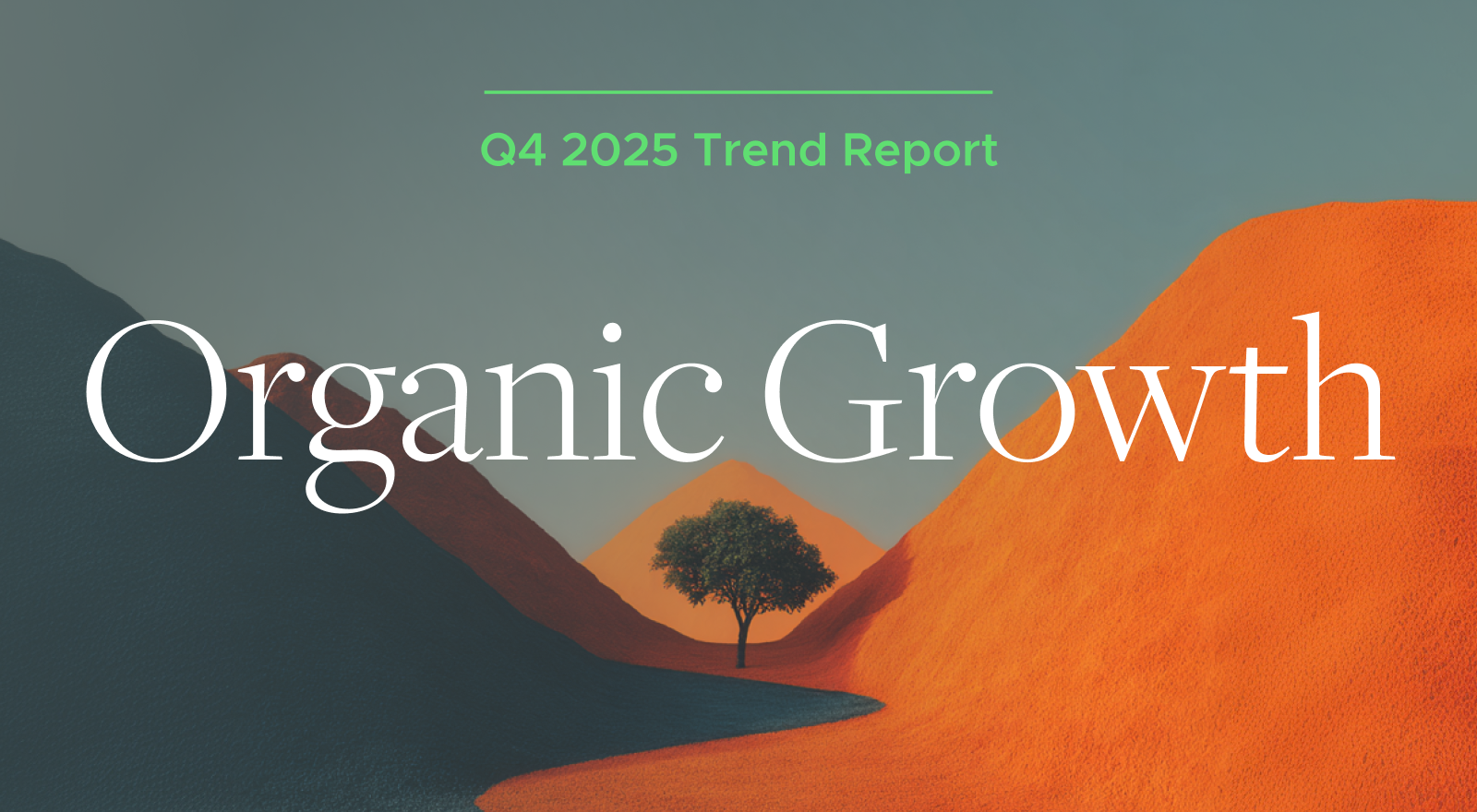
At F2 Strategy, we define the firm's Digital Client Experience (DCX) as "the totality of virtual interactions a consumer has with your firm and personnel throughout their journey as a prospect and client." It’s a critical piece of the relationship you have with your clients, but with so many options for shaping a digital client experience, advisors often overcomplicate or underestimate their delivery. Here are seven things no one is talking about when it comes to the digital client experience that will help you advance your offering and exceed your clients’ expectations:
A Delightful Digital Client Experience is Not Only Important to Millennials and Gen Z.
We often assume older generations want the paper experience of their past while young people push for online tools, but that narrative is no longer valid. Today, nearly everyone at every age wants to engage digitally in some way. The number of investors who want a less digital experience is continually shrinking. At the T3 Conference in May 2022, Advisor Engine revealed that 72% of investors said online information about a firm is influential in hiring a financial advisor.
That same question broken down by age segments flushed out as: 60% Baby Boomers (57-75 years old), 75% were Gen X (42-56 years old), and 80% (26-41 years old) were Millennials. So if you’re an advisor who hasn’t upgraded your digital experience because your “clients are an older generation”, you need to reconsider that position.
Other factors that drive the importance of developing a digital experience for your clients include:
- Experience using other financial apps
- UHNW / HNW have high digital experience expectations regardless of age
- Advisory versus self-directed investors have higher expectations for the value of the service they’re receiving – expect a delightful DCX
Mobile Matters. And Maybe More than Desktop.
In the rush to get any type of DCX out to market, firms have been focused on desktop portals and saving mobile app development for later. But given how far behind the wealth management industry is in digital, compared to other industries, firms can’t afford to wait to go to market with a mobile app.
That’s because mobile apps are no longer differentiators, they’re table stakes. At T3 earlier this year, Envestnet shared that 70% of client portal logins have come from mobile devices. According to Bankrate in 2018, 63% of smartphone users have at least one financial app.
The mobile experience shouldn’t be a carbon copy of your desktop experience. Fight the tendency to create all of the same capabilities and shrink them to phone or tablet size (responsive design). A user doesn’t want to complete all of the same tasks on their phone as they do on their desktop. For example, a user may want to check account balances on their phone and desktop, but may only want to read through detailed transaction information when they’re on their desktop.
Adoption. New Innovation, Same Headache.
We’ve heard this phrase a lot in conversations about digital transformation because it’s a common pain point that is not being addressed. F2 Strategy Research (from 2021 Wealth Tech Forum) shows one of the top needs from firms regarding their client portals is guidance on driving adoption.
Top challenges with adoption plans:
- No clearly communicated firm vision–leadership needs to explain what the firm’s DCX should be and why it’s a value add for clients.
- Lack of firm champions–just as not having a clear vision is a challenge, not having the right people leading the effort from within is a hurdle that needs to be overcome.
- Difficulty measuring-–you can’t improve what you can’t measure and lack of clear metrics that tie DCX to positive business outcomes (profitability, scalability and growth) make it hard for leadership teams to understand the value or lack thereof of their current DCX. One option is direct client questionnaires, which provide solid anecdotal feedback on the client experience; however, they are time consuming and can be subject to selection biases. Firms can also take advantage of business intelligence tools that measure behavioral metrics such as user frustration from unresponsive clicks or rapid scrolling. These offer continuous data on client sentiment because they can be recorded without direct client interaction.
Drive Referrals, Don’t Just “Not Lose” Clients.
Many firms view DCX as something they need to keep up with to retain their current client base, but a strong DCX is just as effective at growing business as it is at retaining it. It can even work better than marketing in some cases. In the first year of Amazon, Jeff Bezos invested 100 times more in client experience than in advertising.
Client referrals are valuable for advisors, but are not easy to come by using traditional means. Tired of those awkward conversations after delivering a fantastic report… “So if you know anyone else who might benefit from my services, send them my way”? Delighting clients with a positive digital client experience is a more effective (and less painful) way to generate referrals.
Digital Client Experience DOES NOT equal a client portal.
Some firms point to their current client portals as evidence of a great DCX. A digital client experience is more than any single client portal. The DCX is the collection of total interactions between clients and firms, bridging the physical and virtual worlds via websites and apps. When firms offer multiple client portals, they actually drive confusion amongst clients and decrease engagement. Think strategically before offering clients every client portal from their technology partners (financial planning, portfolio accounting, CRM, custodians, etc.).
For a digital client experience to be truly compelling, it must extend beyond the client portal and be additive to interactions with the public website, social media channels and other digital interactions. Considering how influential an online presence is to the advisor hiring process – firms really need to focus on their public website and social media presence.
Prospect portals provide a unique opportunity to edge out competitors by showcasing their client experience. Additionally, this can help shorten the sales cycle leading to further efficiencies. The key to using a prospect portal is making it seamless to transition to the client portal, both from the firm and client facing sides.
Digital Client Experience should reflect the firm’s value proposition. Existing tools don’t help them do that.
Many client portal solutions are built around the central theme of account statements, and commonly referred to as “document repositories''. That doesn’t match with what many advisors see as their unique value proposition: a service model focused on financial planning, portfolio management and communication with their clients. Finding a client portal solution that balances all of these components is challenging when looking at existing tech stack components. The key is to identify your differentiators and find the platform that matches them with its features and functionalities.
Good Digital Client Experiences Meet Clients Where They Are Emotionally.
Clients aren’t always rational decision makers. Whether it’s due to unforeseen personal circumstances or exogenous shocks rattling the markets, there will always be a point in the relationship where a client is worried about their financial situation and will want to make an investment decision, potentially a costly one. Advisors have traditionally responded by calling up skittish clients or blasting their whole client base with carefully worded and rational articles about “How to not panic in times of uncertainty”. But if the DCX is a value driver of the relationship, shouldn’t it also adapt to meet the client where they’re at emotionally?
Most firms don’t have a plan to leverage client-facing digital tools and most client portals don’t adjust during times of uncertainty, but doing so can empower the worried investor looking at a depleted retirement account balance and thinking the only next move is calling their advisor to get out of the market. What if their advisor’s commentary was available as a pop-up in response to a client navigating to the balances page? What if there was an event notification for a webinar on the state of the economy showing up on their main dashboard when they logged in?
One example is Fidelity’s brokerage portal. Normally when you log in, you see all of your account balances with daily gains/losses. During March/April 2020, the landing page upon logging in was switched to a tile format that had different actions a user could take and articles to read. This approach was designed to educate users and avoid the emotional response to seeing drastically decreased balances. It had pros and cons. It adapted to the market conditions and in response to investor sentiment, but without the guidance of an advisor, it can be viewed as a “Don’t worry, don’t look over here” approach that invalidates and dismisses investors feelings.
Get help designing a modern digital experience. Contact us to learn how we strategically build experiences that delight clients.




